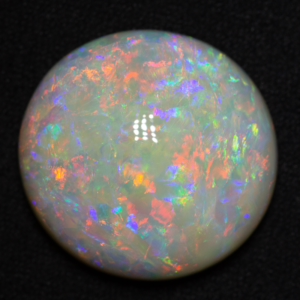Myanmar Amber
Myanmar Amber, also known as Burmese Amber, is one of the most ancient and scientifically significant types of amber. It is found primarily in the Kachin State of northern Myanmar (Burma), where the amber deposits are believed to be around 100 million years old, making it one of the oldest amber sources in the world. This ancient amber is prized for its exceptional preservation of inclusions and its rare historical and paleontological value.
Key Features of Myanmar Amber:
- Color:
- Myanmar amber comes in a variety of colors, including yellow, golden, honey, red, and brown.
- The amber from Myanmar is often more transparent and crystalline compared to other types of amber, which gives it a very clear, rich color and makes the inclusions inside more visible.
- Greenish amber is also found in Myanmar, which adds to its rarity and value.
- Age and Formation:
- Myanmar amber is incredibly ancient, dating back around 100 million years to the Cretaceous period. This makes it significantly older than most other amber types, such as Baltic amber (which dates back 44-60 million years).
- The amber originated from the resin of coniferous trees in ancient tropical forests. Over millions of years, the resin fossilized, preserving the creatures and plants trapped within it.
- Inclusions:
- Myanmar amber is especially renowned for its remarkable inclusions, which include not just insects but also other small organisms such as spiders, lizards, fish, and even tiny vertebrates. The preservation of whole organisms in amber from Myanmar is rare and highly valued by paleontologists and collectors.
- Some of the most significant inclusions found in Myanmar amber are dinosaurs and prehistoric creatures, including a significant number of feathered dinosaur fossils. These discoveries have made Myanmar amber an important source of information about Cretaceous life and have contributed immensely to understanding the evolution of life on Earth.
- Scientific Importance:
- Myanmar amber is considered one of the most scientifically valuable types of amber because of its age and the exceptional quality of its inclusions. It has provided researchers with key insights into ancient ecosystems, including the plants and animals that lived 100 million years ago.
- The presence of feathers and feathered dinosaurs in the amber is especially significant because it offers a unique window into the evolution of birds and the relationship between dinosaurs and modern birds.
- Microfossils found in Myanmar amber can help scientists trace evolutionary lineages, and plant inclusions in amber offer clues about prehistoric flora and the ancient climate.
- Uses:
- Jewelry: Myanmar amber is used extensively in making necklaces, earrings, bracelets, rings, and other forms of jewelry. Its clarity and transparency, along with the visible inclusions, make it a highly sought-after material for jewelers.
- Collectibles: Because of its rare inclusions, Myanmar amber is extremely popular with collectors, especially those interested in the amber’s scientific value. Well-preserved specimens, particularly those with rare inclusions, can be worth tens of thousands of dollars.
- Scientific Study: Myanmar amber is often collected and studied by paleontologists and other scientists. The inclusions it preserves help study the biodiversity of the Cretaceous period, offering crucial information about early evolution, ecosystems, and species interaction.
- Properties:
- Lightweight: Like all amber, Myanmar amber is lightweight, which makes it comfortable for wear as jewelry or in other ornamental uses.
- Transparency: Myanmar amber is known for being more transparent than other types of amber, which allows the inclusions inside to be more clearly visible.
- Succinic Acid: Myanmar amber contains succinic acid (amber acid), which is believed to have certain anti-inflammatory and antioxidant properties, although these claims remain largely anecdotal.
- Care:
- Avoid Heat and Chemicals: Amber is a relatively soft material, and exposure to extreme heat or harsh chemicals can cause it to become brittle or discolor.
- Gentle Cleaning: Clean Myanmar amber gently with a soft cloth and lukewarm water. Avoid using any harsh abrasives or ultrasonic cleaners, as they can damage the surface of the amber and its inclusions.
- Proper Storage: Store amber jewelry away from other jewelry to prevent scratching. Also, avoid long exposure to direct sunlight, as it can fade the amber over time.
Rarity and Value:
- Age: The age of Myanmar amber, around 100 million years, gives it significant scientific value and rarity. Amber this old is not commonly found, making Myanmar amber highly sought after.
- Inclusions: Myanmar amber with rare and well-preserved inclusions of ancient organisms, especially those that are complete or contain dinosaurs and other prehistoric creatures, can be worth substantial amounts.
- Color: Amber with unique color variations, such as greenish or clear amber, is considered rarer and often more valuable.
Interesting Facts:
- Amber from the Cretaceous Period: Myanmar amber is one of the few amber types that dates back to the Cretaceous period, an era that saw the rise of dinosaurs and the first appearance of flowering plants. This makes it incredibly important for understanding the ancient Earth.
- Amber and Dinosaurs: Some of the most famous amber inclusions from Myanmar include feathered dinosaurs and birds, providing crucial evidence about the connection between ancient species and modern birds.
- Historical Significance: Myanmar amber has been used for thousands of years in jewelry and artifacts. It is a key part of the ancient trade networks in the region, and its significance has been recognized by various civilizations.
Care and Handling:
- Avoid Prolonged Sunlight: While amber can be beautifully translucent, prolonged exposure to sunlight can fade its color. It’s best to keep Myanmar amber pieces out of direct light when not in use.
- Avoid Scratches: Amber is soft compared to most gemstones (Mohs hardness of 2 to 2.5), so it’s important to handle Myanmar amber carefully to avoid scratches.
Would you like to learn more about buying Myanmar amber jewelry, or how scientists use it in their research on ancient ecosystems and dinosaurs?

Leave a Reply
Want to join the discussion?Feel free to contribute!